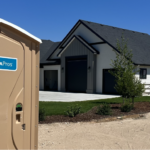
Artificial trees have become increasingly popular in Singapore due to the ease of maintenance, durability, and aesthetic appeal they offer. As a versatile and affordable solution for enhancing indoor and outdoor spaces, artificial trees offer a range of options that cater to various tastes and preferences.
In this comprehensive guide, we will explore the benefits of artificial trees, the various types available, and how to select and maintain them. Whether you’re a homeowner, an interior designer, or a landscaper, this guide will provide you with all the information you need to make an informed decision.
Benefits of Artificial Trees
Artificial trees offer a range of benefits that make them an excellent choice for indoor and outdoor spaces. Here are some of the benefits you can expect:
- Easy Maintenance: Artificial trees require little maintenance, making them ideal for busy homeowners or businesses. Unlike real trees, they do not require watering, pruning, or fertilizing.
- Durability: Artificial trees are made from high-quality materials that ensure they can withstand harsh weather conditions and are resistant to pests and diseases.
- Aesthetic Appeal: Artificial trees come in a variety of sizes, shapes, and colors, making them an excellent choice for enhancing the aesthetic appeal of any space.
- Cost-effective: While the initial cost of an artificial tree may be higher than that of a real tree, the long-term cost is significantly lower since they do not require maintenance or replacement.
Types of Artificial Trees
There are various types of artificial trees available in Singapore, each with its own unique features and benefits. Here are some of the most popular types:
- Silk Trees: Silk trees are made from high-quality silk and are designed to look and feel like real trees. They come in a range of sizes, from small tabletop trees to large indoor trees.
- Plastic Trees: Plastic trees are made from durable, high-quality plastic materials and are often used for outdoor landscaping. They are available in a range of sizes, from small shrubs to large trees.
- Wire Trees: Wire trees are made from wire and are often used for creating unique and artistic designs. They are available in a range of sizes and can be shaped to fit any space.
- Hybrid Trees: Hybrid trees combine the benefits of silk, plastic, and wire trees to create a lifelike and durable tree. They are available in a range of sizes and are suitable for both indoor and outdoor use.
Choosing the Right Artificial Tree
When choosing an artificial tree, it is essential to consider various factors, such as the size, style, and location of the tree. Here are some tips to help you select the right artificial tree:
- Size: Consider the size of the space where you intend to place the tree. Choose a tree that is proportionate to the space and does not look too small or too big.
- Style: Choose a tree that complements the style and theme of your space. For instance, a palm tree would look great in a tropical-themed room.
- Location: Consider whether the tree will be placed indoors or outdoors. If it is for outdoor use, choose a tree that is weather-resistant and can withstand harsh conditions.
- Quality: Choose a high-quality tree that is made from durable materials and has a lifelike appearance.
Maintaining Artificial Trees
Maintaining artificial trees is relatively easy and requires minimal effort. Here are some tips to help you maintain your artificial tree:
- Clean the tree regularly: Use a soft cloth or brush to remove dust and dirt from the leaves and branches.
- Protect the tree from sunlight: Direct sunlight can cause the colours of the tree to fade. Place the tree in a shaded area to avoid this.
- Store the tree properly: If you need to store the tree, ensure that it is in a cool and dry place to prevent damage from moisture.
- Replace damaged parts: If any part of the tree gets damaged, replace it immediately to maintain the lifelike appearance of the tree.
- Keep the tree away from heat sources: Artificial trees can be damaged by heat sources such as fireplaces or heaters. Ensure that the tree is placed away from any heat sources.
- Use a plant cleaner: Use a plant cleaner that is specifically designed for artificial trees to keep them looking their best.
- Check the warranty: Before purchasing an artificial tree, check the warranty to ensure that it covers any damages or defects.
Conclusion
Artificial trees are a great option for enhancing the aesthetic appeal of any space. With their ease of maintenance, durability, and affordability, they have become increasingly popular in Singapore. Whether you are looking for an indoor or outdoor tree, there are various types and styles available to suit your needs. By following the tips in this guide, you can select and maintain an artificial tree that will provide years of beauty and enjoyment. Remember to choose a high-quality tree and maintain it properly to ensure that it looks lifelike and lasts for years to come.







